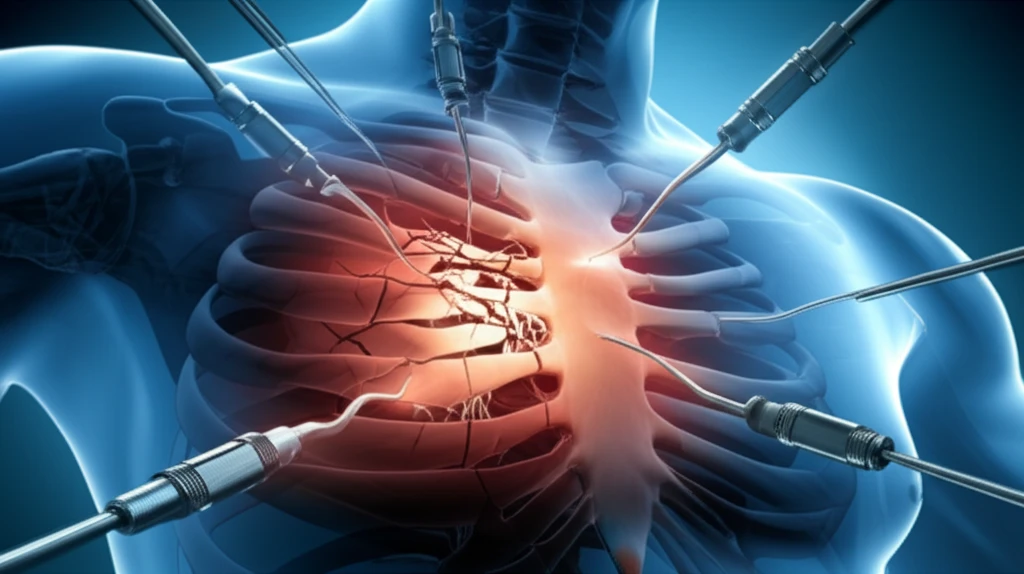
From Trauma to Triumph: How Sternal Fixation Can Ease Pain and Restore Movement
"Discover how surgical sternal fixation is revolutionizing recovery for patients with traumatic sternal fractures, offering a path to reduced pain and improved upper extremity function."
Sternal fractures, often resulting from traumatic injuries, present a significant challenge for patients. The intense pain and restricted movement, particularly in the upper extremities, can severely impact daily life and hinder recovery.
Traditionally, treatment has focused on pain management, often delaying a return to normal activities. However, a promising surgical approach known as sternal fixation is gaining traction, offering a potential solution to alleviate pain and improve upper extremity range of motion. This approach aims to stabilize the fractured sternum, promoting faster healing and improved function.
This article explores the benefits of sternal fixation for traumatic sternal fractures, drawing on recent research to understand how this procedure can revolutionize patient recovery. We'll delve into the outcomes, advantages, and what the future holds for this innovative treatment.
Sternal Fixation: A New Approach to Fracture Management

A study presented at a recent Scientific Forum, led by Zachary M. Bauman and colleagues at the University of Nebraska Medical Center, investigated the efficacy of surgical sternal fixation. Their research involved a retrospective review of patients who underwent sternal fixation following traumatic sternal fractures.
- Reduced Pain: Patients experienced a notable decrease in pain levels following sternal fixation.
- Decreased Narcotic Requirements: The need for pain medications, particularly narcotics, was significantly reduced.
- Improved Upper Extremity Range of Motion: Patients regained better mobility and function in their upper extremities.
- Faster Recovery: Sternal fixation facilitated a quicker return to daily activities and overall improved recovery.
Looking Ahead: The Future of Sternal Fracture Treatment
Sternal fixation represents a significant advancement in the treatment of traumatic sternal fractures. By providing stability, reducing pain, and improving function, this surgical approach offers patients a pathway to faster and more complete recovery.
While the initial results are promising, researchers emphasize the need for further prospective studies to solidify these findings and explore the long-term benefits of sternal fixation. These studies will help refine the procedure, identify ideal candidates, and optimize post-operative care.
For individuals suffering from traumatic sternal fractures, sternal fixation offers hope for a return to a more active and pain-free life. Discussing this option with a qualified medical professional is a crucial step in exploring the best course of treatment and recovery.
